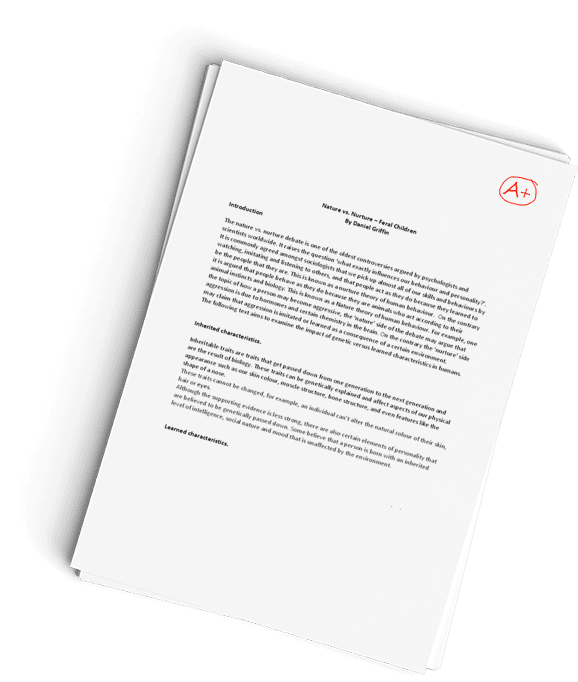Burton week 12 on trust
Question Description
I have a question for you man and I will listed 3 answers of my classmates so u can look fit then nd get some idea BUT remember this assignment. need to be creative
question
What are your thoughts on Trust and Betrayal in the Workplace? What have been your reflections and observations on trust from your group work in the past?
Answer 1
Deconstructing the elements of trust and the conditions it is needed in is something I see as extremely applicable to emergency management. Trust occurs between at least two people where each does not have direct control over the situation, but you believe working together will bring you to the desired outcome, a process that makes you vulnerable (Robert, Dennis, & Hung, 2009). Granting trust is the product of an internal calculation of perceived risk, where an outsized risk is unlikely to be trusted (Robert et al., 2009).
Our online class format creates relationships that fit well into the concept of swift trust, a trust dynamic that does not contain the benefit of developing over time (Robert et al., 2009). Forming a new working relationship with each crisis is a characteristic of emergency management. I think it is fair to state that each incident will be subject to the concept of swift trust, with impressions of each team member’s characteristics probably carrying the first steps of a project.
Robert et al. point to increased risk in groups that communicate over an electronic medium (2009). There are fewer moments to interact, and simple conversations become a lengthy back and forth. I see it as fair criticism that an exchange that could occur on a walk to buy coffee can take a couple of days in the online classroom.
Reina and Reina offer six behaviors that comprise the trust of character, behaviors that include being consistent, and keeping agreements (2015). Simon cites his poor leadership experiences, which hinges upon the perception that the person appointed to lead has their attention focused inward and is unreliable. I agree with Reina and Reina that trust in a leader is built or eroded through the small, everyday interactions (2015). When the big moment arrives, as a team member, I look to my leadership not simply out of hierarchy or protocol but from a trust that is tended to each shift together.
Reina, R., & Reina, D. (2015). Trust and betrayal in the workplace. Oakland, CA: Berrett-Koehler Publishers.
Robert, L. P., Jr., Dennis, A. R., & Hung, Y. C. (2009). Individual swift trust and knowledge-based trust in face-to-face and virtual team members. Journal of Management Information Systems, 26(2), 241-279.
Answer 2
Many of you indicate that trust must be earned, but my personality leads me to trust others immediately (I’m interested to know if this is the same for anyone else because it’s the one thing about which I disagree with both Reina and Reina and Robert, et al.). The level of trust I place in someone, however, fluctuates based upon my experiences with them. For example (again similar to many of you), the DON at the long-term care facility at which I was working acted similar to Simon and Eliza’s superiors: selfish, unprofessional, and took advantage of her title. Not only did she reprimand individuals in front of residents, visitors, and other staff members, she also refused to speak to the nurse aides unless it was regarding something that s/he was doing incorrectly. During my first week, she referred to me as “orient” instead of the name that I had just provided to her and indicated that we nurse aides were “a dime a dozen” even though we were always understaffed.
Our “leader” made us dread coming to work, and other staff members warned me of her actions beginning from my first day on the job. I, however, chose to give her the benefit of the doubt until her actions proved otherwise. Among the other listed shortcomings, she also refused to help out on the floor. ManorCare stated that all staff members should answer call lights, but she used her title as immunity more often than not. If she miraculously stopped to answer a call light, she would walk room-to-room, searching for a nurse aide to whom she would proceed to relay the request… even if it was simply a glass of water or another blanket.
While team members built relationships around disdain for the DON, I don’t think we ever had the chance to establish true trust because our boss didn’t trust us to do our jobs efficiently and effectively. Reina & Reina indicate establish the three C’s of trust – character, communication, and capability – and the breakdown at ManorCare between leadership and general staff lies in all three of these areas. As staff members, when we were asked to give feedback, we rarely saw a change. Therefore, it was difficult to accept that we were supported – a character breakdown. Leadership rarely accepted responsibility for their mistakes and did not maintain confidentiality regarding staff-leadership conversation. Therefore, we feared that our thoughts and concerns meant to be discussed privately would be spread via rumor – a communication breakdown. Staff members were only publically reprimanded, never publically appreciated or acknowledged by leadership, so we felt like we did not matter to the organization, leading to an increase in the rates of call-offs and short-staffed stations – a capability breakdown.
The DON set herself apart because of her title; we did the “dirty” job, and she indicated that she was too superior to help us. We didn’t see her as a leader; we saw her solely as a disciplinarian and learned to fear her rather than trust that she would advocate for and support us. It could be that we, as a staff, misunderstood her (Reina & Reina, 2015, p. 43), but I think my experience with this particular DON has taught me that communication is key when it comes to building trust. Sharing information, telling the truth, admitting mistakes, giving and receiving constructive feedback, maintaining confidentiality, and speaking with good purpose (Reina & Reina, 2015, p. 44) can make the difference between being seen as trustworthy and untrustworthy. In chaotic situations such as those of a disaster when multiple groups of individuals join together with other groups of individuals, it’s important to remember to maintain those characteristics so that communication does not break down. Trusting co-responders will be the difference in mitigating loss of life and property and avoiding waste of resources.
Reina, D. and Reina, M. (2015) Trust and Betrayal in the Workplace Building Effective Relationships in Your Organization. Retrieved from Berrett-Koehler Publishers
Answer 3
I believe trust in the workplace is paramount to a successful work performance and overall culture. Whereas in many cases, I do believe trust has to be earned. However, many times in the workplace, especially emergency management, trust has to be assumed from the beginning. For example, when an employer hires someone for a job, they have to trust that they hired the right person to do the job correctly. This is true to emergency management as well. Incident Commanders/Section Chiefs have to trust they hired the right person to assist with managing an incident. If they were wrong, or the person betrayed that trust and did the job incorrectly or against protocols, the consequences puts lives, infrastructure and other cascading impacts at risk.
Workplace environments that have been little supported and trusted may have found themselves forcibly having to reconcile with that today. Since COVID-19 has forced many employers to have their employees work from home. Previously to COVID-19, many employers feared allowing their employees to work from home because they believed it would reduce productivity. Managing was best done by visibly seeing who was in the office doing work. However, this management strategy had to shift for many employers to trust their employees and based their productivity off of deliverables, rather than observation of creating the deliverables.
References:
Global Work Place Analytics. (2020). Work-at-home after COVID-19- Our forecast. Retrieved from: https://globalworkplaceanalytics.com/work-at-home-after-covid-19-our-forecast (Links to an external site.)
Reina, R., & Reina, D. (2015). Trust and betrayal in the workplace. Oakland, CA: Berrett-Koehler Publishers.
Robert, L. P., Jr., Dennis, A. R., & Hung, Y. C. (2009). Individual swift trust and knowledge-based trust in face-to-face and virtual team members. Journal of Management Information Systems, 26(2), 241-279
Have a similar assignment? "Place an order for your assignment and have exceptional work written by our team of experts, guaranteeing you A results."








